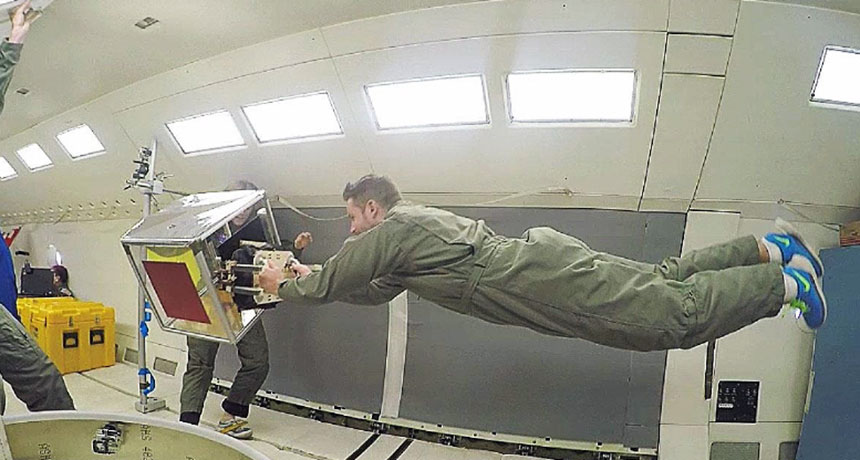Gecko-inspired robot grippers could grab hold of space junk
Engineers tested the adhesive on a giant air hockey table and in microgravity

IT’S A BIRD, IT’S A PLANE Aaron Parness of NASA’s Jet Propulsion Laboratory does his “best Superman” to grab a floating cube with a new gecko gripper–inspired hand in a microgravity plane.
H. Jiang et al/Science Robotics 2017





